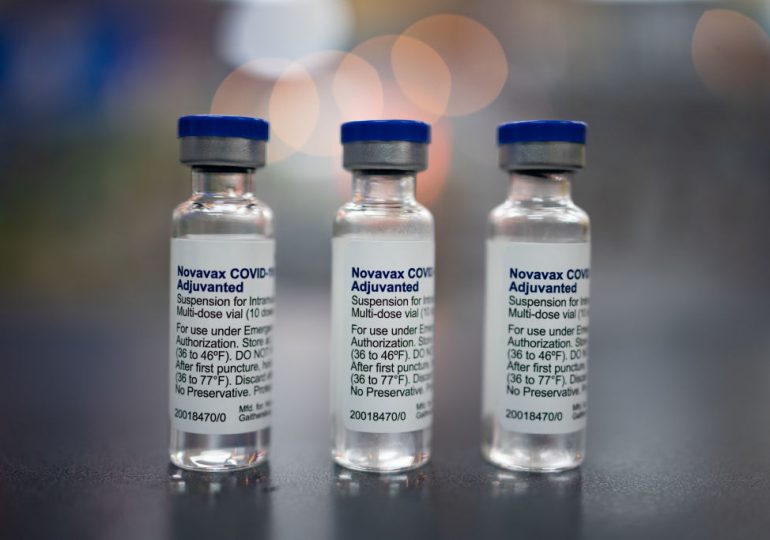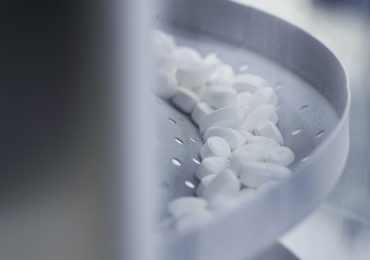It’s fall, which means it’s time to get updated on the winter season shots. That includes vaccines for flu, RSV (for babies and the elderly) and, for anyone six months or older, COVID-19.
While the new mRNA vaccines from Moderna and Pfizer-BioNTech have dominated the COVID-19 vaccine story, there is another type of shot that uses a more traditional vaccine-making technology, used by Novavax. The vaccine is generating interest among some people online who prefer the more tried and true approach behind the company’s shot, so here’s what you need to know.
[time-brightcove not-tgx=”true”]
How is Novavax’s vaccine different from mRNA vaccines?
Novavax uses a protein-based vaccine strategy, which means people getting the vaccine receive a protein made by the virus that their body’s immune systems then see as foreign and mount responses against. mRNA vaccines, by contrast, include snippets of mRNA genetic material from the COVID-19 virus’ spike protein.
Novavax makes its vaccine by first inserting the gene for a SARS-CoV-2 viral protein into an insect virus, then using this loaded virus to infect an armyworm, or larva, of a moth that infects cabbages. Using the larva, the virus then produces more copies of itself, and by default, more copies of the SARS-CoV-2 protein as well, and it is this COVID-19 protein that is then used in the vaccine.
Bob Walker, chief medical officer at Novavax, says this method does a good job of mimicking the way the SARS-CoV-2 virus naturally infects the body, which could theoretically lead to some benefits in terms of the immune response the vaccine generates, although the company and others are still conducting deeper studies to find out whether that’s the case. “The construct resembles the virus in terms of how the [body’s] immune cells might see it—the full length of the spike protein that represents the natural configuration of the viral protein,” he says. “And that has certain potential advantages.”
The protein is coupled with what vaccine makers call an adjuvant, or additional compound that further activates the immune system to enhance the body’s response to the virus. “One major advantage of the adjuvant is that it works not only on the antibody side in terms of the immune response, but it also activates the T cells,” says Walker. “And T cells have many functions in the body—one is to fight viruses, and the other is to help antibody-producing cells to make more antibodies.”
Is Novavax’s vaccine approved by the U.S. Food and Drug Administration (FDA)?
Novavax’s COVID-19 vaccine is not approved by the FDA yet, but it is available in the U.S. under emergency use authorization, which the FDA issued to the company in July 2022, and allows companies to make and distribute a product during a public health emergency while the FDA continues to review a broader set of data concerning its safety and efficacy. Novavax’s vaccine is safe and effective, but the agency is reviewing more robust and longer term data. Novavax has filed for full approval of its COVID-19 vaccine and expects a decision from the FDA by April 2025.
Both Pfizer-BioNTech and Moderna have received approval for adults for their COVID-19 vaccines, in 2021 and 2022, respectively, after first receiving emergency use authorization in 2020. Their shorter timeline was due mainly to the fact that the mRNA technology streamlines the development and manufacturing time for the shots. Because Novavax’s vaccine-making process requires more time, and different types of testing, Walker says it’s taken longer to complete the regulatory requirements for approval. But “with each successive season, we are getting faster and more efficient in manufacturing our vaccines, and we think we will be able to shorten that difference in time,” he says. “But I don’t know that we will ever surpass mRNA [technology’s timeline] just because of the technological and testing requirement differences.”
Which vaccine provides better protection against COVID-19?
Studies conducted by academic researchers over the past few years consistently show that there are few major differences between the mRNA and Novavax vaccines in terms of the immune responses they generate. Researchers generally measure this by looking at levels of neutralizing antibodies that the body makes against SARS-CoV-2, which were comparable across all three manufacturers’ vaccines. Some studies have also looked at T cell responses which also appear to be similar among the three shots so far.
Is one vaccine better at protecting against the new COVID-19 variants?
Over the summer, the FDA recommended that vaccine makers target the KP.2 strain of SARS-CoV-2 for the upcoming fall and winter season, and studies from Moderna, PfizerBioNTech, and Novavax show that each of the company’s updated vaccines provide strong protection against this strain as well as some of the even newer ones that have emerged in recent months. That’s because all of the variants remain related and are part of the Omicron group.
I’ve heard Novavax vaccine has fewer side effects. Is that true?
There haven’t been enough rigorous side-by-side comparisons of side effects and adverse events between the mRNA vaccines and the Novavax shot; instead each manufacturer has provided the FDA with reports of side effects that each has seen in its respective studies. But it appears that so far, people receiving the Novavax vaccine may be reporting fewer events such as fever, muscle aches, and headaches compared to those receiving either mRNA vaccine. All COVID-19 vaccines from the three manufacturers have been linked to an increased risk of inflammation of heart muscle, or pericarditis or myocarditis—most of the studies involving the risk with Novavax’s vaccines have come from outside of the U.S.
Which vaccine should I get this year?
“The best vaccine is the one that is in your arm,” says Walker. “We are in the fortunate position that we have multiple options, and are not relying on one technology to achieve very high levels of protection and safety. The FDA has determined that all of these vaccines are safe and effective.”
Leave a comment






